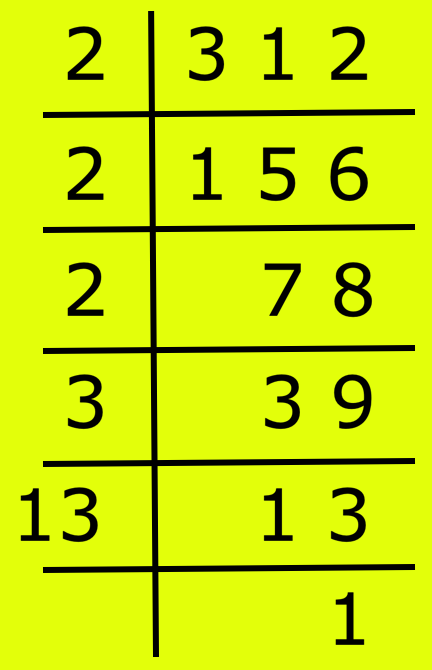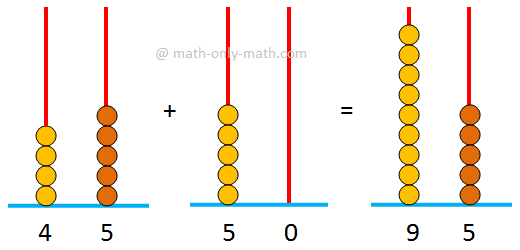Problems on Expanding of (a ± b)3 and its Corollaries
Here we will solve different types of application problems on expanding of (a ± b)3 and its corollaries.
1. Expanding the following:
(i) (1 + x)3
(ii) (2a – 3b)3
(iii) (x + 1x)3
Solution:
(i) (1 + x)3 = 13 + 3 ∙ 12 ∙ x + 3 ∙ 1 ∙ x2 + x3
= 1 + 3x + 3x2 + x3
(ii) (2a – 3b)3 = (2a)3 - 3 ∙ (2a)2 ∙ (3b) + 3 ∙ (2a) ∙ (3b)2 – (3b)3
= 8a3 – 36a2b + 54ab2 – 27b3
(iii) (x + 1x)3 = x3 + 3 ∙ x2 ∙ 1x + 3 ∙ x ∙ 1x2 + 1x3
= x3 + 3x + 3x + 1x3.
2. Simplify: (x2+y3)3−(x2−y3)3
Solution:
Given expression = {(x2)3+3⋅(x2)2⋅y3+3⋅x2⋅(y3)2+(y3)3}−{(x2)3−3⋅(x2)2⋅y3+3⋅x2⋅(y3)2−(y3)3}
= 2{3⋅(x2)2⋅y3+(y3)3}
= 2{3⋅x24⋅y3+y327}
= x2y2+2y327.
3. Express 8a3 – 36a2b + 54ab2 – 27b3 as a perfect cube and find its value when a = 3, b = 2.
Solution:
Given expression = (2a)3 – 3(2a)2 ∙ 3b + 3 ∙ (2a) ∙ (3b)2 – (3b)3
= (2a – 3b)3
When a = 3 and b = 2, the value of the expression = (2 × 3 – 3 × 2)3
= (6 – 6)3
= (0)3
= 0.
4. If x + y = 6 and x3 + y3 = 72, find xy.
Solution:
We know that (a + b)3 – (a3 + b3) = 3ab(a + b).
Therefore, 3xy(x + y) = (x + y)3 – (x3 + y3)
Or, 3xy ∙ 6 = 63 – 72
Or, 18xy = 216 – 72
Or, 18xy = 144
Or, xy = 118 ∙ 144
Therefore, xy = 8
5. Find a3 + b3 if a + b = 5 and ab = 6.
Solution:
We know that a3 + b3 = (a + b)3 - 3ab(a + b).
Therefore, a3 + b3 = 53 – 3 ∙ 6 ∙ 5
= 125 – 90
= 35.
6. Find x3 - y3 if x – y = 7and xy = 2.
Solution:
We know that a3 - b3 = (a - b)3 + 3ab(a - b).
Therefore, x3 - y3 = (x - y)3 + 3xy(x - y)
= (-7)3 + 3 ∙ 2 ∙ (-7)
= - 343 – 42
= -385.
7. If a - 1a = 5, find a3 - 1a3.
Solution:
a3 - 1a3 = (a - 1a)3 + 3 ∙ a ∙ 1a(a - 1a)
= 53 + 3 ∙ 1 ∙ 5
= 125 + 15
= 140.
8. If x2 + 1a2 = 7, find x3 + 1x3.
Solution:
We know, (x + 1x)2 = x2 + 2 ∙ x ∙ 1x + 1x2
= x2 + 1x2 + 2
= 7 + 2
= 9.
Therefore, x + 1x = √9 = ±3.
Now, x3 + 1x3 = (x + 1x)3 - 3 ∙ x ∙ 1x(x + 1x)
= (x + 1x)3 - 3(x + 1x).
If x + 1x = 3, x3 + 1x3 = 33 - 3 ∙ 3
= 27 – 9
= 18.
If x + 1x = -3, x3 + 1x3 = (-3)3 - 3 ∙ (-3)
= -27 + 9
= -18.
From Problems on Expanding of (a ± b)3 and its Corollaries to HOME PAGE
Didn't find what you were looking for? Or want to know more information about Math Only Math. Use this Google Search to find what you need.
Recent Articles
-
5th Grade Factors and Multiples | Definitions | Solved Examples | Math
Mar 23, 25 02:39 PM
Here we will discuss how factors and multiples are related to each other in math. A factor of a number is a divisor which divides the dividend exactly. A factor of a number which is a prime number is… -
Adding 2-Digit Numbers | Add Two Two-Digit Numbers without Carrying
Mar 23, 25 12:43 PM
Here we will learn adding 2-digit numbers without regrouping and start working with easy numbers to get acquainted with the addition of two numbers. -
Worksheet on 12 Times Table | Printable Multiplication Table | Video
Mar 23, 25 10:28 AM
Worksheet on 12 times table can be printed out. Homeschoolers can also use these multiplication table sheets to practice at home. -
Vertical Subtraction | Examples | Word Problems| Video |Column Method
Mar 22, 25 05:20 PM
Vertical subtraction of 1-digit number are done by arranging the numbers column wise i.e., one number under the other number. How to subtract 1-digit number vertically? -
Worksheet on 11 Times Table | Printable Multiplication Table | Video
Mar 22, 25 05:08 PM
Worksheet on 11 times table can be printed out. Homeschoolers can also use these multiplication table sheets to practice at home.






New! Comments
Have your say about what you just read! Leave me a comment in the box below. Ask a Question or Answer a Question.